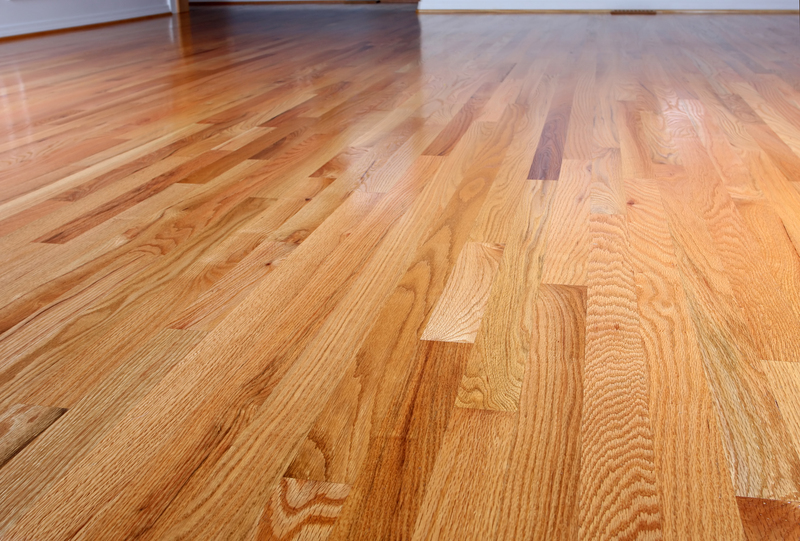Master the Art of Pet Odor Removal for an Inviting Home
Posted on 08/09/2025
Master the Art of Pet Odor Removal for an Inviting Home
Pet ownership is a joy, bringing companionship and unconditional love into our homes. However, no matter how cute our furry friends are, they sometimes leave behind less desirable gifts: persistent pet odors. Whether caused by accidents, shedding, or natural animal musk, these smells can quickly permeate your living space. Learning the art of pet odor removal not only keeps your home smelling fresh but also invites guests to feel comfortable and welcome.

Understanding Pet Odors: Why They Linger
Before embarking on the journey of eradicating pet smells, it's crucial to understand their source. The most common causes include:
- Urine and feces accidents
- Pet dander and saliva
- Wet fur or musky body oils
- Dirty bedding or litter boxes
These odors become problematic because organic compounds--such as ammonia from urine or proteins from dander--cling to fibers in carpet, upholstery, and other porous surfaces. Over time, these compounds break down, causing lingering and sometimes worsening smells.
Why Standard Cleaning Isn't Enough
Too often, homeowners rely on standard cleaning methods or fragrances. Sprays and air fresheners may mask pet odors, but they do not address the underlying issue. For true pet odor elimination, you must target the source, neutralize the odor-causing bacteria, and ensure lasting cleanliness. Mastering pet odor solutions involves both immediate action and ongoing prevention.
Comprehensive Pet Odor Removal Strategies
Ready to reclaim your home's inviting atmosphere? Follow these expert-approved steps to master the art of pet odor removal.
1. Identify and Locate Odor Sources
Begin by determining the affected areas. Sometimes pet accidents are obvious, but often, smells persist because the source was never properly treated. Here's how to locate elusive odors:
- Use your nose or ask a sensitive-nosed family member to help pinpoint trouble spots.
- Darken the room and use a black light: Pet urine spots glow under UV light, revealing old or hidden accidents.
- Inspect pet bedding, litter boxes, cages, and favorite lounging areas regularly.
2. Immediate Action: Remove Fresh Accidents
Promptly dealing with fresh stains is key to preventing stubborn smells.
- Blot the area with absorbent towels (do not rub!) to soak up as much moisture as possible.
- Rinse the spot with cool water and blot again.
- Apply a dedicated enzymatic cleaner specifically designed for pet stains. These break down proteins and eliminate odor at the molecular level.
Tip: Avoid using steam cleaners on pet urine. The heat can bond the protein into fibers, making the odor more difficult to remove.
3. Deep Cleaning for Persistent Pet Smells
If the odor is set-in or widespread, deeper cleaning is necessary.
Carpets and Rugs
- Rent or invest in a carpet cleaner with enzymatic cleaning solutions.
- Repeat treatments as pet urine penetrates deeply.
- For area rugs, take them outside to air dry in sunlight whenever possible. UV rays kill bacteria and neutralize odor naturally.
Upholstery and Furniture
- Vacuum thoroughly to remove pet hair and dander.
- Use upholstery-safe pet stain removers. Spot test in an inconspicuous area first.
- For washable cushion covers, launder with a cup of vinegar or baking soda to deodorize naturally.
Hard Floors
- Clean accidents promptly with a mild enzymatic cleaner or a mixture of vinegar and water.
- Never use ammonia-based cleaners; their scent can attract pets to repeat the offense.
4. Home Remedies: Natural Pet Odor Removal
Many pet odor removal techniques use natural, non-toxic ingredients safe for pets and children. Popular options include:
- Baking soda: Sprinkle over carpets and upholstery, let sit for at least 15 minutes, then vacuum thoroughly. Baking soda absorbs and neutralizes foul odors.
- White vinegar: Mix equal parts water and vinegar in a spray bottle. Mist smelly surfaces and let air dry. Vinegar breaks down organic compounds and kills bacteria.
- Lemon juice: The fresh scent of lemon also has antibacterial properties. Diluted juice can be used in cleaning mixes for problem areas.
- Activated charcoal: Place bowls near odor hotspots. Charcoal naturally pulls smells out of the air.
Note: Test all homemade solutions on a small, hidden area before use to ensure compatibility with surfaces.
5. Whole-House Freshening Techniques
Go beyond spot treatments with these reliable methods to keep your entire home smelling clean:
- Invest in a high-quality air purifier with a HEPA filter. These capture pet dander and other allergens.
- Open windows frequently to increase ventilation and let fresh air circulate.
- Wash pet bedding, blankets, and toys weekly in hot water with a pet-safe detergent.
- Replace air filters in your HVAC system regularly to prevent recirculating pet odors.
6. Prevent Future Odors
Once you've conquered existing pet odors, keep your home inviting by establishing an ongoing cleanliness routine:
- Brush and bathe pets regularly, according to their breed's needs. Less fur and dander means fewer smells.
- Scoop litter boxes daily and replace litter weekly. Deep-clean the box once a month.
- Vacuum floors and furniture at least twice a week, using attachments to reach corners and under furniture.
- Relocate food and water bowls to easily cleaned areas and wipe them down daily.
- Use stain repellents on rugs and upholstery to make future cleanup simpler.
Expert Tips: Mistakes to Avoid When Removing Pet Odors
- Don't just cover up odors. Candles and sprays are short-term solutions that may irritate sensitive guests.
- Avoid generic cleaning products. Not all are formulated for pet stains, and some can actually make odors worse.
- Don't let stains sit. The longer pet accidents linger, the harder they are to remove.
- Don't forget hidden spots. Pets may mark behind furniture, under rugs, or in seldom-used rooms.
- Never use harsh chemicals that can harm your pets, yourself, or your furnishings.
Green and Safe Pet Odor Removal Practices
More homeowners want to minimize chemical use for the safety of their families and the environment. Luckily, pet odor neutralizing products today are gentler and more eco-friendly than ever. Look for:
- Plant-based or biodegradable enzymes
- Cleaners certified as pet-safe and non-toxic
- Natural ingredients like essential oils (use only those approved for pets!)
Pro Tip: Avoid tea tree, peppermint, or citrus essential oils around cats and dogs, as some can be toxic if ingested or absorbed through the skin. Always dilute and research before use.
When to Call Professional Pet Odor Removal Services
Despite your best efforts, certain situations call for professional help:
- Multiple or old set-in stains throughout carpet and padding
- Persistent, unexplained odors even after cleaning
- Preparing to sell or rent your home and needing assurance of thorough odor elimination
Professional pet odor removal companies use industrial cleaning tools, specialized deodorizers, and ozone generators for the most stubborn smells. This may be the best path to fully restore your home's freshness.

Frequently Asked Questions About Pet Odor Removal
How often should I clean to prevent pet odors?
Consistency is key. Weekly washing of pet bedding, frequent vacuuming, and prompt handling of all accidents go a long way toward a perpetually fresh home.
Are all pet odor eliminators safe?
Not necessarily. Always read labels and choose products specifically labeled pet-safe. Test new solutions on a small spot before widespread use.
Does baking soda really work for pet odors?
Yes! Baking soda absorbs and neutralizes a wide range of organic odors. Sprinkle on dry surfaces, let sit, then vacuum up for a simple, effective treatment.
How do I stop my pet from returning to the same spot?
Pets are creatures of habit and tend to revisit areas marked previously. A thorough, enzyme-based cleaning is necessary. Additionally, try placing food bowls over the cleaned area, as pets avoid soiling in their eating spaces.
Create an Inviting Home with Pet Odor Mastery
Living with pets doesn't mean resigning yourself to a less-than-fresh home. With the right combination of quick action, deep cleaning, pet-friendly products, and ongoing hygiene, you truly can master the art of pet odor removal. Welcome family and guests with open arms--along with your beloved pets--knowing your sanctuary smells clean, healthy, and inviting, every day.
Remember: The key to a welcoming home is not just loving your pets, but also loving the space you share with them. Make odor removal a habit, not a chore, and enjoy your pet-friendly haven to the fullest!



